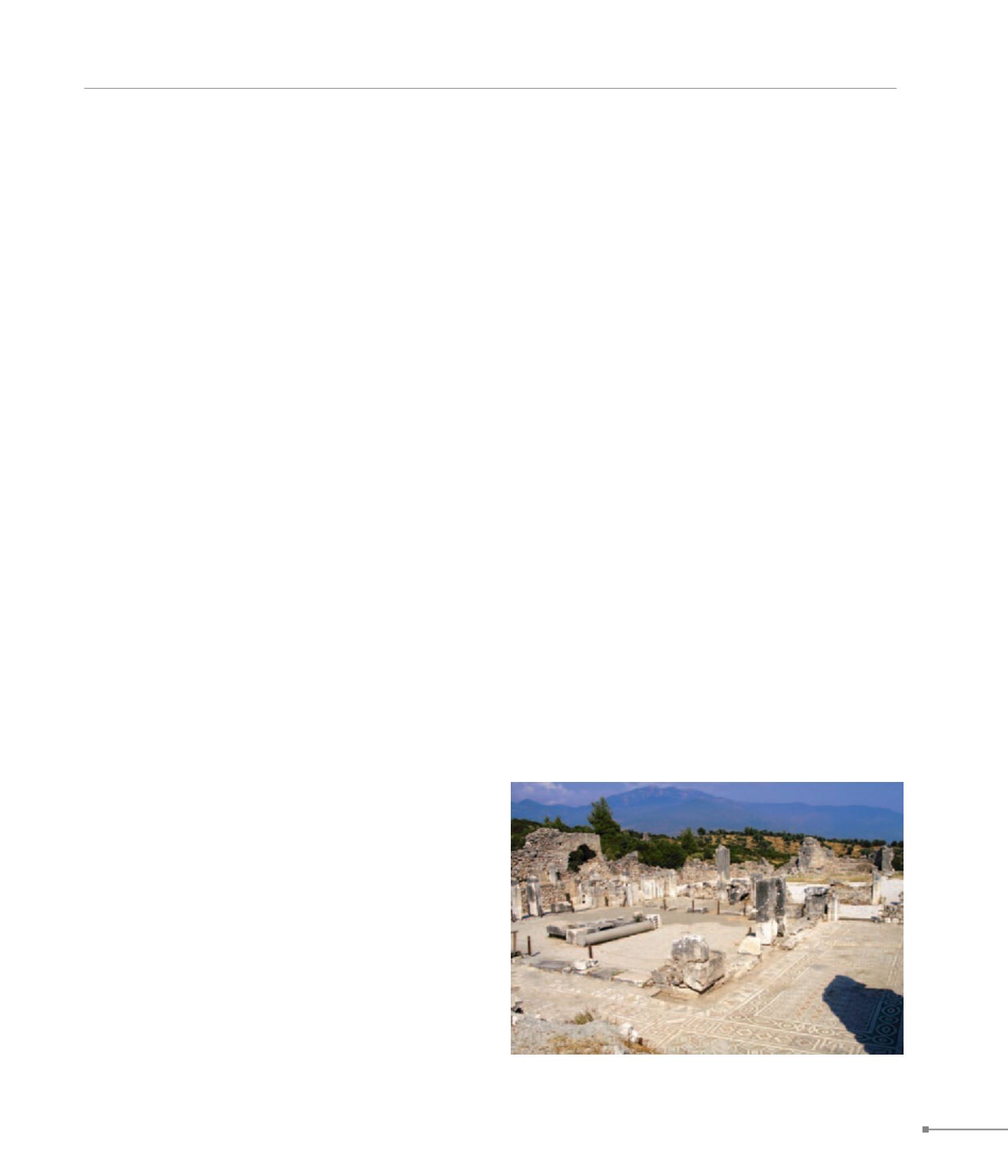
Sicak Iskeleri. Aperlae.
Sancakli Limani. Kalavatia.
COASTLINE OF ASIA MINOR AND EASTERN THRACE
295
524. Xanthos, basilica (Ξάνθος, βασιλική)
Lycia
525.
Letoon.
Letoon features a three-aisled basilica with rows of piers and
annexes.
521.
Sicak Iskeleri. Aperlae.
There are four Early Christian basilicas with numerous build-
ing phases. At Simena Kale is a three-aisled basilica. On the
small fortress Byzantine interventions can be detected. The
oblong islet Dolichiste (currently known as Kekova) seems to
have been systematically inhabited. There are remnants of nu-
merous houses and of a sunken chapel. In Tersane cove, in
the NW of the island, there used to be remnants of basilicas.
At Tristomon (
Üç
a
ğ
iz), known as Teimioussa in antiquity, there
stands a barrel-vaulted chapel with a domed annex, of uncer-
tain date. A free-standing gate decorated with a cross possibly
belongs to an Early Christian basilica.
526.
Pydna.
At Pydna, also called Cydna, is a Hellenistic fortification that
was repaired after the 6th c. It was here that a three-aisled
basilica with rows of piers, two apses and annexes was built
in the 6th c. This basilica was reconstructed into a cross-in-
square church in the 10th c. Ruins of a church also exist out-
side the walls.
527.
Karacaburum. Aghia Akra.
At Karacaburum, also named Yediburum or K
ö
t
ü
burum, for-
merly called Aghia Akra, is a Byzantine settlement. A three-
aisled, three-apsed basilica (6th c.) with annexes and sculp-
tures is found here.
528.
Sancakli Limani. Kalavatia.
At Kalavatia is a Byzantine settlement. A tower and a twin-
naved church, with remnants of wall-paintings in the apse,
have been observed in the harbour area and can be dated to
the 7th c.
522.
Kilin
ç
li. Apollonia.
In Apollonia (Kilin
ç
li), 1 km N of Aperlae, are the impressive
remains of a domed, cross-in-square Mid-Byzantine church
at the location of the theatre. NW of the theatre is an Early
Christian basilica.
523.
Gelemi
ş
. Patara.
Remnants exist of at least four basilicas (5th-6th c). The ba-
silicas at the harbour and in the city were three-aisled, one
with a transept. After their destruction, cross-in-square church-
es were established. Besides these, there are other smaller
churches. Minor parts of the city were fortified, possibly in the
reign of Justinian. The harbour was fortified in the middle ages
and an impressive domed church was built on earlier founda-
tions.
524.
Kinik. Xanthos.
The large, well-preserved East Basilica dates from the Early
Christian period (circa 500). It features an atrium with mosaic
floors, and a tetraconch baptistery, converted into a chapel
in the Mid-Byzantine years, which includes frescoes and an
altar screen with reused Early Christian capitals. At the citadel,
the three-aisled basilica of the 6th c. is a large complex with
a triconch baptistery or martyrium, many annexes and a large
cistern. A smaller three-aisled basilica is located in the W sec-
tion of the Roman agora. Many more edifices are preserved,
some with surviving mosaic floors. The citadel was fortified
again between the mid-6th and the early 7th c.


